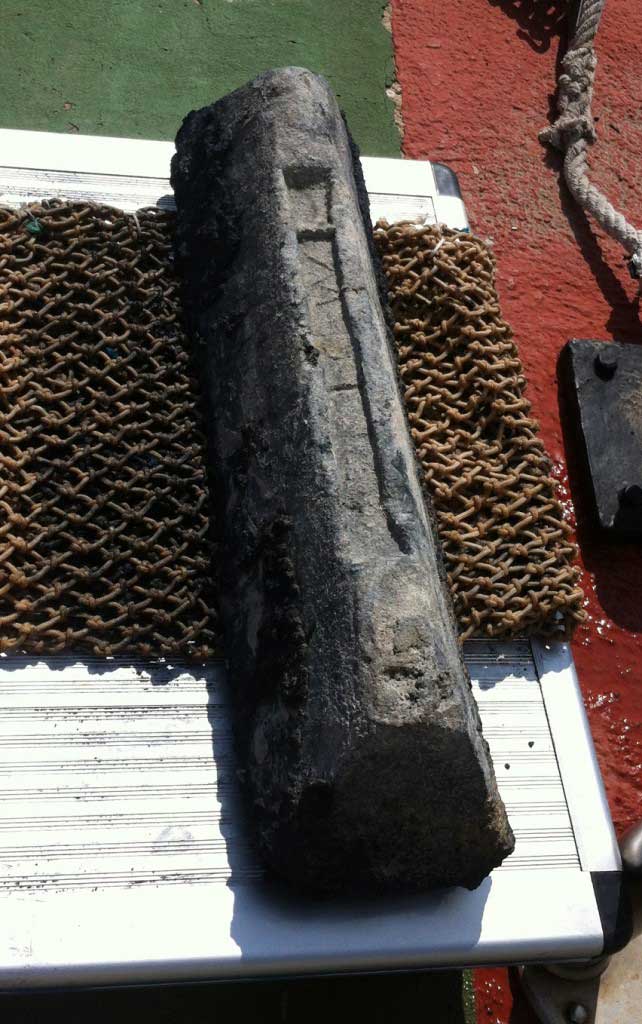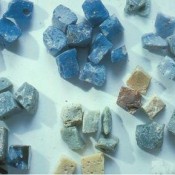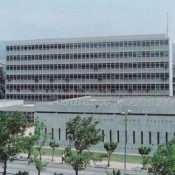Two thousand years ago, across the waters from the coast of Sardinia a Roman vessel with lead ingots sank. The lead had been extracted from the Sierra of Cartagena. More than a hundred of these ingots have been used since 2011 for the ‘Cryogenic Underground Observatory for Rare Events’ (CUORE), an advanced detector of neutrinos at the Gran Sasso National Laboratory in Italy.
In the 18th century, another ship loaded with lead ingots was wrecked on the French coast. Treasure hunters retrieved this material and, despite problems with French authorities, managed to sell it to the Cryogenic Dark Matter Search (CDMS) team. This detector is located in a mine in Minnesota (USA) and looks for signs of the enigmatic dark matter, which is believed to constitute a quarter of the universe.
Archaeologists worried by the destruction of underwater cultural heritage and particle physicists pleased to have found a unique material for research on neutrinos and dark matter referred to these two examples in the discussion opened between them. Underwater archaeologist Elena Perez-Alvaro from the University of Birmingham and Fernando González Zalba from the University of Cambridge have published a study in the journal ‘Rosetta’ (13/5, pp. 40-46) entitled “Experiments on Particle Physics Using Underwater Cultural Heritage: The Dilemma”, posing the question: Should we sacrifice part of our cultural heritage in order to achieve greater knowledge of the universe and the origin of humankind? Should we yield part of our past to discover more about our future?
“Roman lead is essential for conducting these experiments because it offers purity and such low levels of radioactivity — all the more so the longer it has spent underwater — which current methods for producing this metal cannot reach,” explains Elena Perez-Alvaro. “Lead extracted today is naturally contaminated with the isotope Pb-210, which prevents it from being used as shielding for particle detectors,” adds physicist Fernando González Zalba.
“Underwater archaeologists see destruction of heritage as a loss of our past, our history, whilst physicists support basic research to look for answers we do not yet have,” remarks Perez-Alvaro, “although this has led to situations in which, for example, private companies like Odyssey trade lead recovered from sunken ships.” This is the company that had to return the treasure of the frigate Nuestra Señora de las Mercedes to Spain.
As Alvaro and Zalba write in the conclusion of their paper: “The study of sunken vessels is essential to history because entire continents have been discovered, colonised, invaded and defended by sea. The salvage of this material should be done under the surveillance of an archaeological team. On the other hand, not so far in the future, the development and operation of new sciences and technologies make it likely that further investigation, development and use of the underwater cultural heritage for other purposes may occur. If boundaries are not well defined, a ‘first come, first served’ approach may occur”.
The two scientists are thus encouraging dialogue between both collectives, and strees the need of developing legislation that regulates these kinds of activities.
“Recovery for knowledge in both fields, and not merely for commercial reasons,” the scientists suggest. However, the jury is still out. In the case of the CUORE detector, for example, in principle the lead from the least well-preserved Roman ingots is used, although their inscriptions are cut and preserved. As some archaeologists point out, there are other pieces of valuable metal, such as anchor stocks, that one should decide whether or not to “sacrifice for science.” However, they are protected by UNESCO’s 2001 Convention on the Protection of Underwater Cultural Heritage if they have been under water more than 10 years and the 2003 Convention for safeguarding intangible cultural heritage.
As for the use that Romans made of these ingots, Pérez Álvaro points out that there are many theories, “but they were generally used as water-resistant material for pipes, water tanks or roofs, but also in the manufacture of arms and ammunition.”
A special case are the large lead bricks recovered from the wreck of the Bou Ferrer, the largest Roman ship of the excavation of the Mediterranean, which sunk off the coast of Villajoyosa (Alicante). A series of engravings enable specialists to determine that their owner was the Emperor of Rome himself, probably Caligula, Claudius or Nero.




